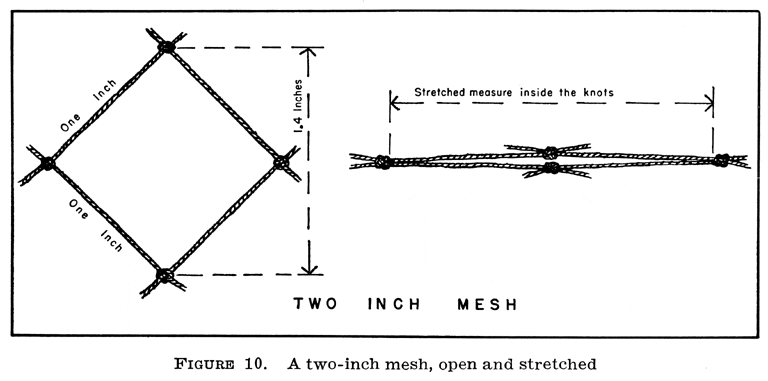Bycatch is a huge problem for the US shrimp industry, which is under pressure to reduce the unintended entrapment of marine species. Devices that deflect turtles and help fish avoid or escape the nets have been necessary for years, and federal law requires nets to be fitted with devices that reduce bycatch by 30 per cent but despite this, the amount of bycatch is still about three times that of the targeted shrimp (North Carolina Wildlife Federation).
A report released by the North Carolina Wildlife Federation described the amount of bycatch in the state as being unsustainably high and unacceptable at about three times that of the targeted shrimp.
But North Carolina's shrimp industry is huge -- fishermen harvested 14.1 million US dollars worth of shrimp in 2014, and nearly 200 commercial fishermen currently work in the industry.
In light of the bycatch, North Carolina is now taking steps to find a solution. In 2015 the North Carolina Marine Fisheries Commission established a group of fishermen, net makers, researchers, fish dealers and other stakeholders who gather and evaluate information on the effectiveness of various bycatch reduction devices or BRDs.
Among those tested are the composite panel with spooker cones (a cylindrical shaped device used to spook or scare fish to seek escape), additional escape openings called fisheyes and tailbags, also known as codends, the portion of the net that holds the shrimp catch.
Three commercial shrimp fishing trawl vessels tested a different type of BRD for three to four weeks during the summer of 2015. An average of 1 per cent shrimp loss and 27 per cent fish loss was calculated from gear fitted with the composite panel with spooker cones.
Following an initial week with the use of a 3" grid alone as a BRD, a square mesh panel, 1" tailbag and a federal fisheye were added to the test gear. Results showed that the 3" grid alone reduced finfish by 20 per cent but lost greater than 12 per cent of target shrimp on average, although the added combinations maintained an increased fish loss of 27 per cent, while shrimp losses were less than 3 per cent on average.
One of the boats tested what's called a Ricky BRD (2 federal fisheyes with a float attached) but only saw a finfish reduction of 4.5 per cent and 26 per cent shrimp loss, so it switched to 2 federal fisheyes and a 1?" tailbag. This generated a 38 per cent reduction in finfish and a 1.5 per cent gain in shrimp. A mean fish loss of over 38 per cent and a slight gain (2 per cent) in mean shrimp catch was recorded overall.
Kevin Brown, Gear Development Biologist at the North Carolina Division of Marine Fisheries, described the test results as promising, and talked about some possible impacts.
"The gears tested in 2015 had significant finfish reduction, up to 38 per cent, and very little shrimp loss," he said.
"When BRDs are added to a net, they impact both target (shrimp) and non-target (bycatch) catch rates and luckily our research has had a minimal impact on the target species. This will also directly affect the fishermen. For example, they'll be able to make longer tows since the tailbag is not filling up with unwanted catch, reduce sorting time and potentially provide a superior product as sorting time is reduced, while the shrimp won't be on deck for long and will be iced faster as well."
Despite the requirement by federal law that nets be fitted with devices that reduce bycatch by 30 per cent, the North Carolina Marine Fisheries Commission has set a 40 per cent goal, which Brown described as unprecedented.
"In addition, it's important to note the difference between our testing and that of the federally certified testing, which has a 30 per cent reduction over a net without a BRD," he said.
"With the assumption that our control net already has the 30 per cent reduction from one BRD, the 40 per cent goal over the industry standard equates to a 58 per cent reduction from a net without a BRD."
The current testing is a three-year project, with the second year due to begin in the summer and autumn of 2016. Gear that's due to be tested includes the Double Fisheye with 1 ¾ inch stretch mesh tailbag, Double Fisheye with 1 ¾ inch stretch mesh tailbag and a Turtle Excluder Device (TED) with 3 inch bar spacing, and the Virgil Potter BRD.
Although the project focuses on the shrimp industry in North Carolina, more and more parties are starting to play a part, including researchers with institutions such as the National Oceanographic and Atmospheric Administration (NOAA) Harvesting Systems Unit, University of Massachusetts-Dartmouth, Gulf and South Atlantic Foundation and Gulf of Maine Research Institute. Brown hopes that any promising devices can be tested and possibly implemented regionally in the US and in similar fisheries overseas.
For more information, please contact Kevin Brown at the North Carolina Division of Marine Fisheries at Kevin.H.Brown@ncdenr.gov





